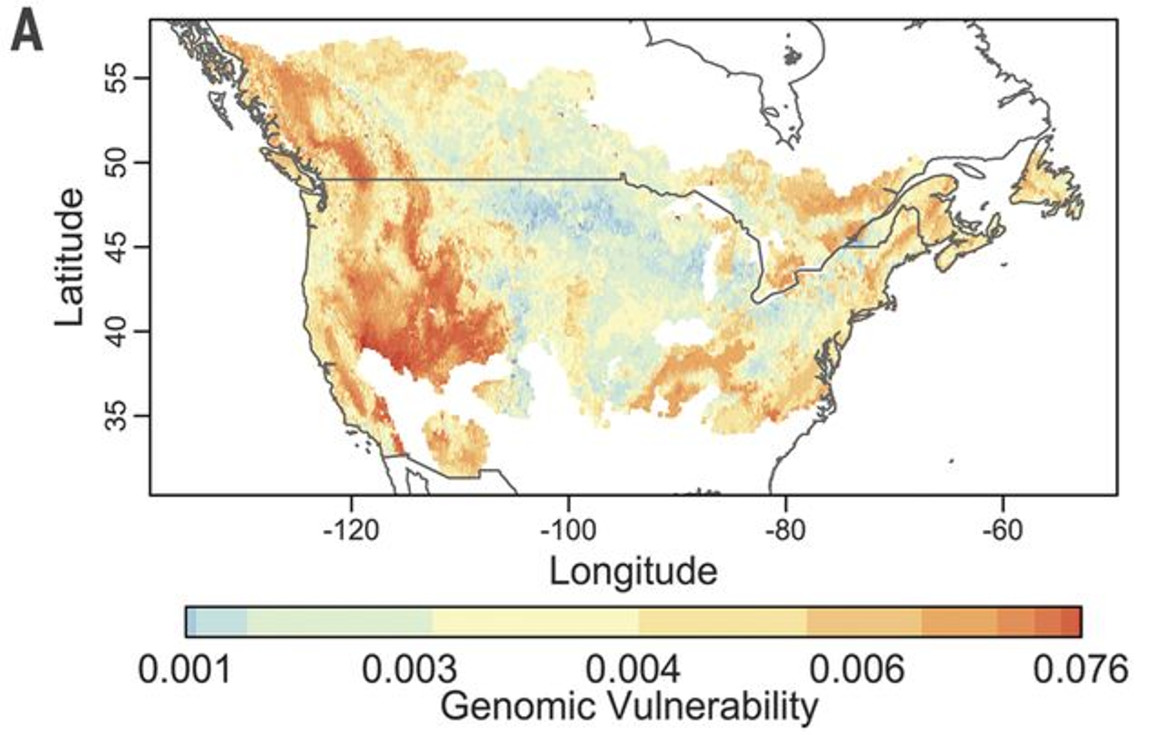Genoscapes and climate change
Globally, 1 in every 6 species is at risk of extinction due to climate change. We know that shifts in climate, including temperature and precipitation, have already impacted migratory birds. For example, many species have shifted their ranges north to compensate for the increasing temperatures. Genoscapes provide the data we need to investigate the consequences of past climate change and predict how species will respond in the future.
Using genomic data, we can understand which components of climate are the most important for determining where a bird can live. Some species might be more affected by temperature, others precipitation, or a combination of the two. Using that knowledge as a baseline, we can then map vulnerability to future climate change across the species’ entire range. This information helps us identify the most vulnerable populations and predict which regions will be inhabited in the future, allowing us to best inform conservation practices aimed at mitigating the negative impacts of climate change.


Genomic vulnerability to future climate change is associated with a higher probability of population decline. (A) Projected genomic vulnerability based on 2050 RCP2.6 climate change projections. (B) Population trend (percent change per year) for the Yellow Warbler (Setophaga petechia) based on an analysis of North American Breeding Bird Survey data (Sauer et al. 2014).
Click here to read our entire study which shows how Yellow Warblers are expected to be impacted by climate change using information gathered from their genoscape.
